
Are you ready for some Football?!
Final Assignment
Faith Hoyt

The football rules in college football changed a few years ago to make the uprights 5 feet narrower. Many game commentators have harped about how much harder it is to kick field goals from the hash marks. Assume the field goal is attempted from the hash marks. At what yard marker does the kicker have maximum angle to the two uprights? Is there any merit to some commentators argument to take a penalty in order to have a "better angle" on the field goal kick?
Before we can start doing any kind of investigation, we first need to look at what the official football rules for NCAA/ College fields are. Below, you will find a diagram with some of the dimensions labeled and a list of the dimensions which I got from sportsknowhow.com.
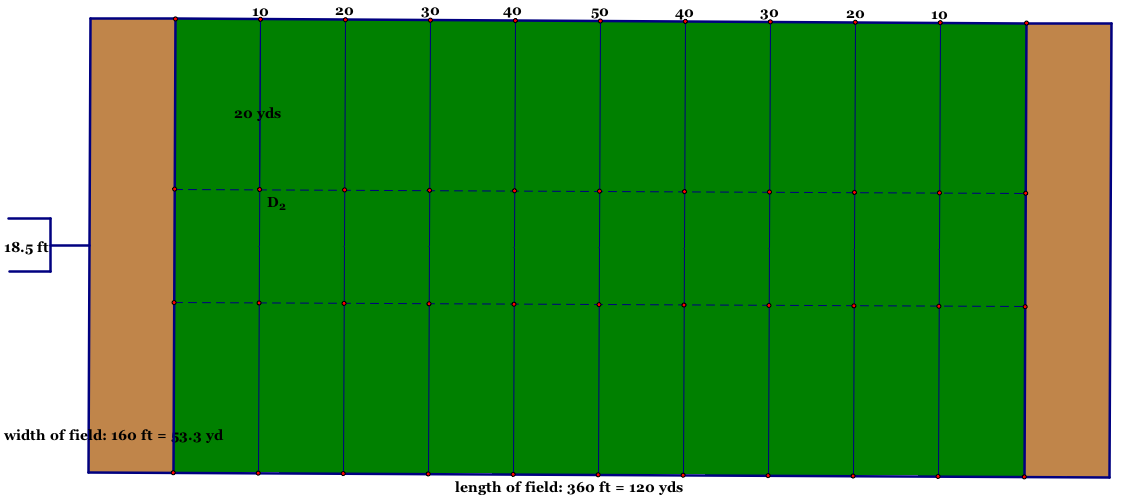
Some specifications:
My sister's boyfriend plays football at Mississippi State University (pictured above). In my investigation of this problem, I was curious to know if there were any inside secrets to what makes a good field goal kick or if there's a certain place on the field that kickers like to kick from. His response was as follows: There are situations where a penalty would be better for a kicker especially inside the 5 yard line. It increases the angle of the kick, which allows a kicker to be more accurate. Also depending on whether the kicker is left or right footed depends on the hash the kicker would prefer to kick from. Right footed kickers like kicking from the left hash and left footed kickers like kicking from the right hash but the most ideal place to kick a field is dead center.
Now that we have measurements to use in our investigation and a little insight, let's look at a closer picture of the field (as a field goal kicker typically does not kick field goals beyond the 50 yd line).

If we move point B around and see what happens as it goes either towards the goal post or away from it, we can notice that the better angle is as it moves closer to the goal. You can investigate this yourself and watch as the angle moves.
Now, we want to find an equation that will give us the angle for a field goal at different distances. We will eventually be able to use this is figuring out what the best angle will be as well as whether it is smart to take the penalty or not. To begin, we are going to make our angle ABC to be included in a right triangle using our new point D. Below is a larger picture:
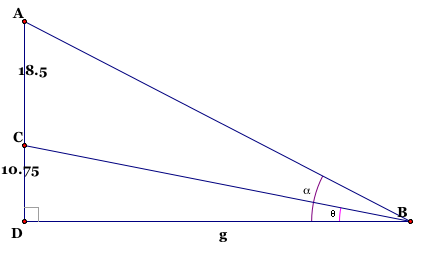
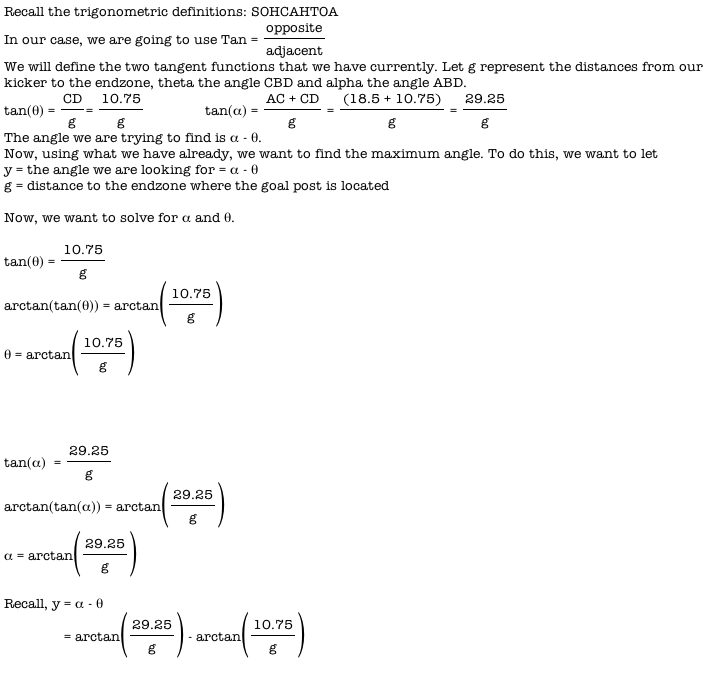
We can see a graph of what this would look like to see a relative pattern of our angles and their significance.

It's hard to see, but if you notice, there is a small curve to our graph, showing that there is in fact a maximum. This seems to happen somewhere between 16 and 20, so I would venture to guess that our maximum angle is going to be between 16 and 20. Let's continue to look at the proof to see.
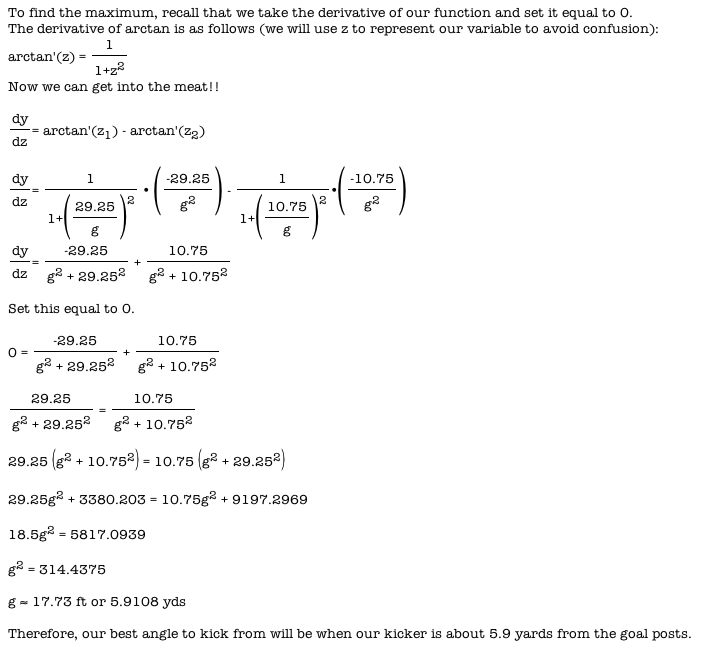
A few things to note about this result. My earlier prediction based on the graph was correct. Our maximum point happens at about 17.73 which is between 16 and 20. Secondly, if we are kicking from 5.9108 yards, that means they are still inside the end zone. Thus we can venture to say that it would not make sense for them to take a penalty to move further back.
We can also look at this using a geometric proof. We want to first construct a circle through our three original points.
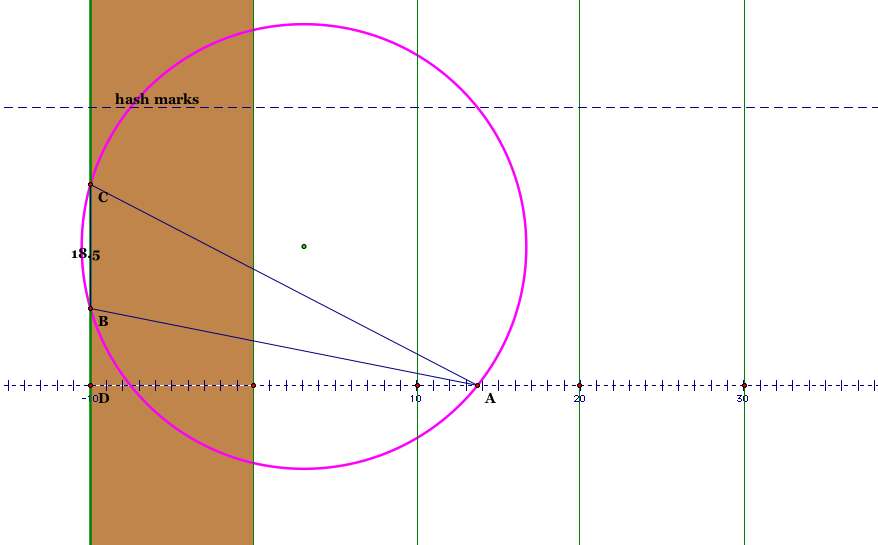
With our circle constructed, note that our distance of the chord BC is 18.5 ft. Therefore, the way to maximize our angle that subtends that length we want to find the minimum radius possible. This just so happens to be when our circle is tangent to the hash marks line. Because our points B and C are fixed on the circle, they create a chord, as discussed previously. Therefore, the center of our tangent circle is going to be on the perpendicular bisector of BC. This is the same line as the line that runs down the center of the field and is 20 feet from the hash marks (since our total width of the football field is 160 ft and our hash marks are each 60 ft from the sidelines that leaves us with 40 ft between the hash marks. So if we take the line that goes through the center of the field, this splits this length in half and gives us our 20 ft). Because this is the case, our radius of the tangent circle we want to find is going to be 20 ft.
Now, we want to find at what yard mark this angle is going to be that will give us our tangent circle. To do that, we want to find at what point our circle will be tangent to the hash marks and still go through both A and B. We can see a close up of this right triangle below in purple.
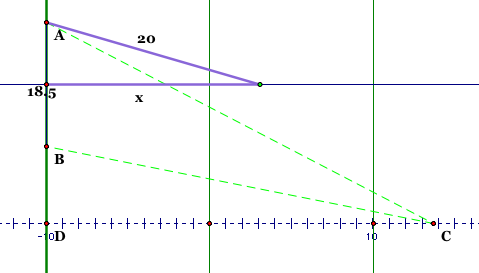
Now, since we know that our base of the triangle is half of our uprights we can find this measurement by dividing 18.5 by 2 to get 9.25. We also already determined that we want our radius of the circle to be 20 ft, which is going to be the hypotenuse of our triangle. Thus, to find the distance our kicker needs to be from the goal posts, we simply have to solve for x.
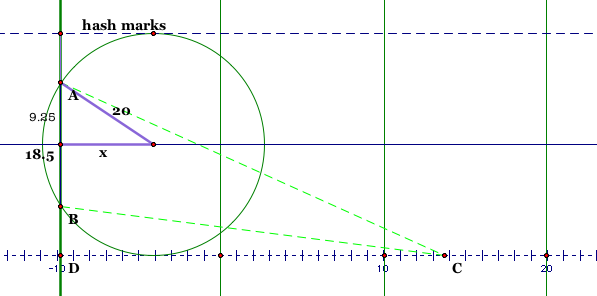
Thus, we can see that our distance that will give us the best kicking angle remains to be about 17.73 feet, showing us once again that it would not be smart to take a penalty to get a better kicking angle.
The kicker would have the maximum angle to the two uprights at 17.73 ft, or about 6 yards.